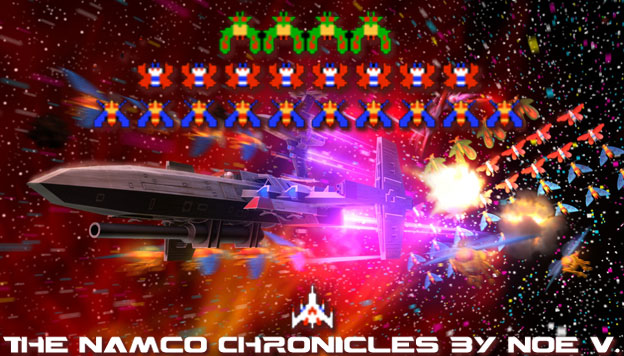
When the original Ridge Racer developers left Namco they broke the trust from their teammates in the process. The camaraderie that they shared with those they left behind had been shattered. It didn't seem to matter how much they had grown personally or professionally on all the titles they had worked with. In the eyes of the publisher only those that stayed behind were truly loyal employees and worthy of carrying forward the Ridge Racer name. Unfortunately those that remained were casual fans of racing. They had not poured their heart and soul into Ridge Racer. They did not grasp the level of insight and passion that the original team had brought to the project until it was too late.
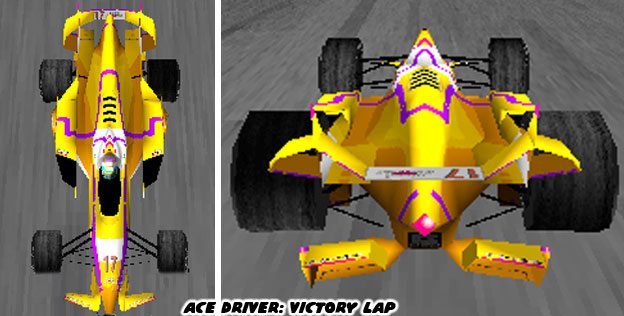
What the remaining members had was experience in multiple genres and in 3D programming. They could guarantee that the very next racing game from the company would at least look good as their rivals, and be playable. It might not be the greatest racing experience but it would be enough to keep the company moving forward. The designers that stayed behind had cut their teeth on the brilliant UGSF arcade shooters. They had a certain aesthetic in mind and wanted to redefine the genre. The rides featured in Ridge Racer were very nice but they weren't revolutionary. So the new project members challenged themselves to create a whole new breed of race car. Each car would look like a traditional open-wheel racer but upon further inspection they would begin to resemble space ships.
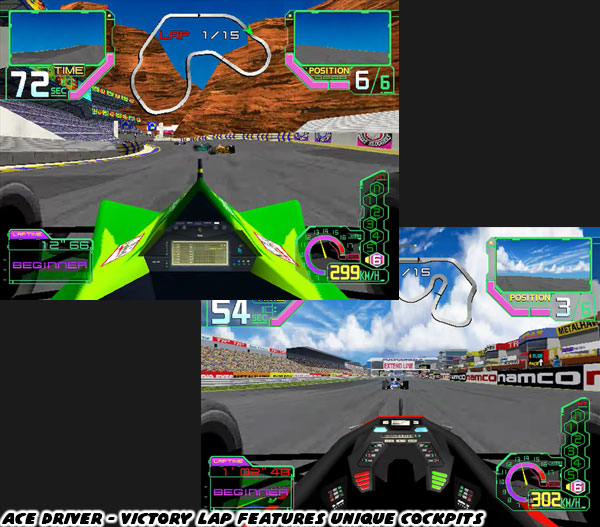
The designers envisioned the Ace Driver: Victory Lap cars as being the peak of race technology. They would be the race cars that were being driven around the time of Cyber Sled and Cyber Commando. They would be in a class above every category in Ridge Racer. Each of these new rides featured power plants, transmissions and aerodynamics superior to those on all of the Ridge Racer production cars. This would become the distinction made between actual GT-class cars and Formula-1 racers. While both racing leagues featured millions of dollars worth of R&D in the cars only one type of car was specifically designed for racing. The GT cars by comparison were rooted in production autos.
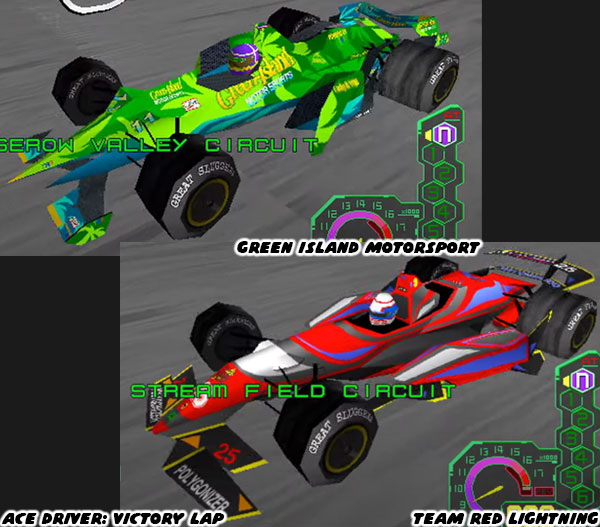
With the exception of the prototype class most GT cars had been sports cars that were converted for racing duty. The multi-wing technology that Namco featured on the Ace Driver cars was not a new concept for Formula-1 or INDY racing. It was the layout and position of the wings, air splitters, spoilers and bodies that were radically different than those in real-life open wheel racers. In many instances the game from 1994 would predict the trends that the actual Formula-1 racing cars would use almost 20 years later.
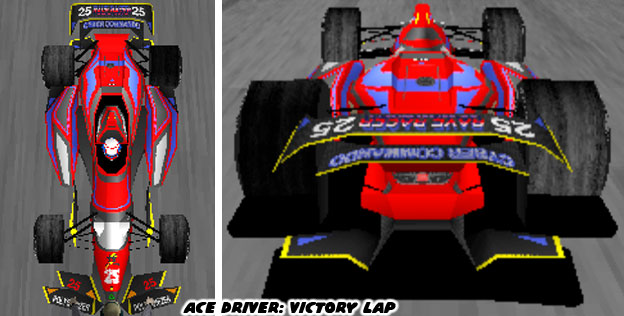
The cars in Victory Lap took on the characteristics of the UGSF space ships. There was a hint of Galaga, Nebulas Ray, Solvalou and even Starblade in each car. It made sense that the Ridge Racer and Ace Combat games were connected. The manufactures sponsoring the Ridge Racer tournament were using the cars as test beds for new technologies. Many of these advances were meant for mass production. This was a reflection of the real world. The big auto manufacturers would enter rolling tests beds into endurance races. They were great for advertising but were also used so that engineers could gain a lot of insight by pushing new technology to the breaking point. What about the companies that had a very specific goal in mind? Perhaps the ones that wanted to manufacture parts for a smaller market, like airplanes and space ships. These manufacturers needed a way to advertise their presence and test out the reliability of their equipment as well. Should they be prohibited from creating race cars? Of course not!
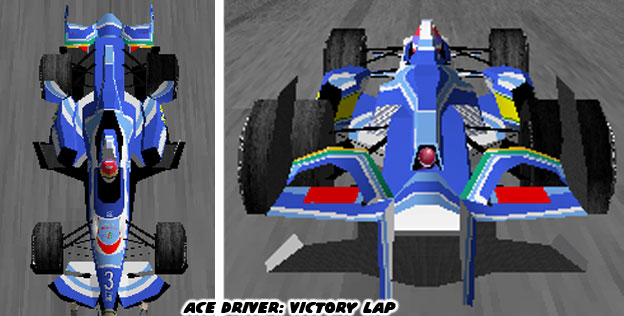
There was an evolutionary gap between the vehicles featured in Ridge Racer and the planes from Ace Combat. The majority of the rides in Ridge Racer looked like those that could be bought at a local dealership. The radical designs of a pure racing machine was lacking in the series. The open wheel cars in Ace Driver filled that gap. They were as close as Namco had ever come to creating land-based fighter jets. The cars had modern suspensions to shift the balance between turns and even wings that were flexible and helped steer the cars around the most brutal turns. Wings in actual Formula-1 cars were fixed and engineers were not allowed to adjust them in the middle of a race. These cars honestly looked like the wheeled cousins of the ADF-01 Falken. They looked like the ancestors of the GeoSword and Dragoon. Although there were only four of these cars created for the series each one had a tremendous presence. The most "conservative" of the racers was still far bolder than the most recent F-1 car. It would be a shame if audiences around the world never got another chance to pilot these cars. Especially on the consoles!
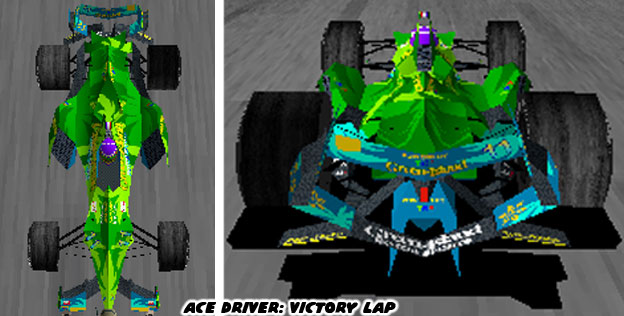
With the numbered Ridge Racer series on an indefinite hiatus I could only speculate what Namco was working on. They had learned a tremendous amount over the past 20 years, the most important being that they could outlive Sega so long as they believed in their own titles. The best games they created during that era had withstood the test of time. The classic hits were still referenced as examples of greatness across multiple genres. Perhaps the company was trying to figure out how to present a new generation of Ridge Racer to audiences. One that would connect the dots between Ace Driver, Ace Combat and the UGSF continuity. Whatever the case was I would be eternally grateful to the company for every experience they provided my brothers and I in the arcade. For every great console moment and for every carpal-tunnel inducing mobile game I would also say thanks.
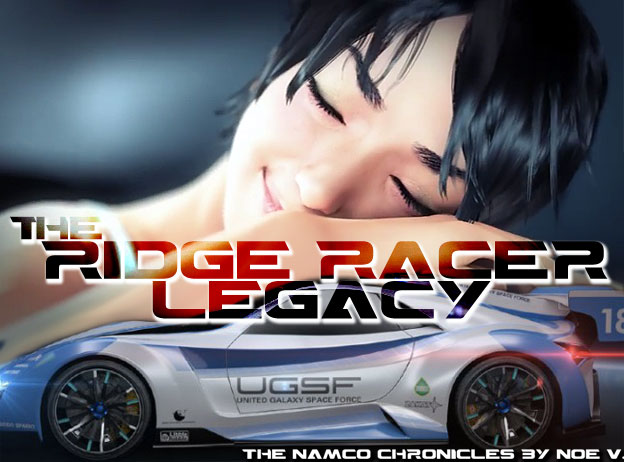
This has been the Ridge Racer Legacy, my blog chronicling the contributions of Namco (now Namco Bandai Games) to a generation. I hope you enjoyed the series. If you have any questions or comments please feel free to leave them. Thank you for following along and I wish you all the best. As always if you would like to sponsor me
please visit my Patreon page and consider donating each month, even as little as $1 would help make better blogs and even podcasts!









No comments:
Post a Comment